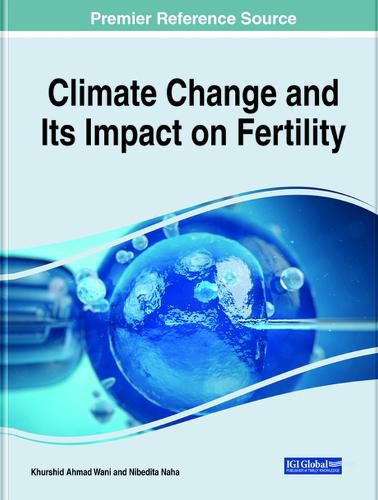Readings Newsletter
Become a Readings Member to make your shopping experience even easier.
Sign in or sign up for free!
You’re not far away from qualifying for FREE standard shipping within Australia
You’ve qualified for FREE standard shipping within Australia
The cart is loading…






This title is printed to order. This book may have been self-published. If so, we cannot guarantee the quality of the content. In the main most books will have gone through the editing process however some may not. We therefore suggest that you be aware of this before ordering this book. If in doubt check either the author or publisher’s details as we are unable to accept any returns unless they are faulty. Please contact us if you have any questions.
Climate change is the biggest threat to the fertility of mammals across the globe through its potential effects on heat stress, nutrition security, extreme weather events, vulnerable shelter, and population migration. Climatic variables, such as temperature and humidity, are common environmental stressors as well as nutritional stress, which reduces fertility. Besides climate and nutritional stressors, another major factor responsible for reduced fertility discovered within the past decade is the exposure to potential hazardous substances such as chemical, radiation, physical, biological, and occupational hazards. This exposure includes anything from heavy metals and gases to pathogens and toxins and any substance that interferes with natural biological functions of the exposed workers, pregnant and breast-feeding workers, and young working population. There also must be research focused on developmental hazards that alter the structure and function of the developing embryo as well. The different climatic factors in the era of climate change need to be explored to discuss the impacts on fertility.
Climate Change and Its Impact on Fertility highlights the issues and concerns that address the latest impact of climate change and mitigation strategies for enhancing early embryo survival and uterine potential. This book covers the effects of climate change on both the biological parents and the embryo by discussing the negative impacts, providing an overview of the variety of climate changes currently affecting fertility, and exploring possible solutions. This book is ideally intended for medical scientists and doctors, reproductive biologists, experimental toxicologists, mammalian cell biologists, clinicians, embryologists, health and safety agencies/regulatory authorities, public health officials, and policymakers along with practitioners, stakeholders, researchers, academicians, and students interested in climate change and its link to embryo growth, developmental risk, implantation failure, and fertility.
$9.00 standard shipping within Australia
FREE standard shipping within Australia for orders over $100.00
Express & International shipping calculated at checkout
This title is printed to order. This book may have been self-published. If so, we cannot guarantee the quality of the content. In the main most books will have gone through the editing process however some may not. We therefore suggest that you be aware of this before ordering this book. If in doubt check either the author or publisher’s details as we are unable to accept any returns unless they are faulty. Please contact us if you have any questions.
Climate change is the biggest threat to the fertility of mammals across the globe through its potential effects on heat stress, nutrition security, extreme weather events, vulnerable shelter, and population migration. Climatic variables, such as temperature and humidity, are common environmental stressors as well as nutritional stress, which reduces fertility. Besides climate and nutritional stressors, another major factor responsible for reduced fertility discovered within the past decade is the exposure to potential hazardous substances such as chemical, radiation, physical, biological, and occupational hazards. This exposure includes anything from heavy metals and gases to pathogens and toxins and any substance that interferes with natural biological functions of the exposed workers, pregnant and breast-feeding workers, and young working population. There also must be research focused on developmental hazards that alter the structure and function of the developing embryo as well. The different climatic factors in the era of climate change need to be explored to discuss the impacts on fertility.
Climate Change and Its Impact on Fertility highlights the issues and concerns that address the latest impact of climate change and mitigation strategies for enhancing early embryo survival and uterine potential. This book covers the effects of climate change on both the biological parents and the embryo by discussing the negative impacts, providing an overview of the variety of climate changes currently affecting fertility, and exploring possible solutions. This book is ideally intended for medical scientists and doctors, reproductive biologists, experimental toxicologists, mammalian cell biologists, clinicians, embryologists, health and safety agencies/regulatory authorities, public health officials, and policymakers along with practitioners, stakeholders, researchers, academicians, and students interested in climate change and its link to embryo growth, developmental risk, implantation failure, and fertility.